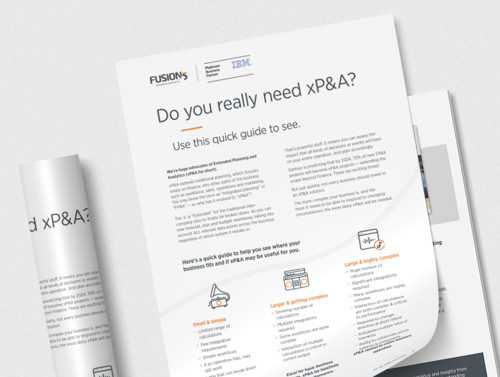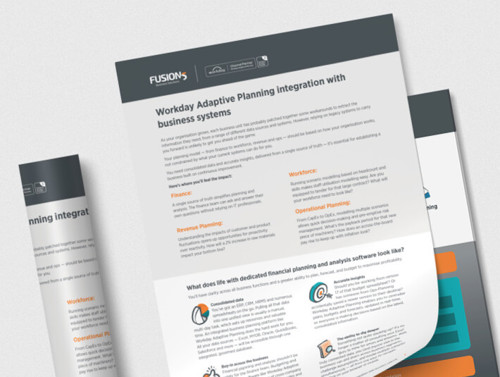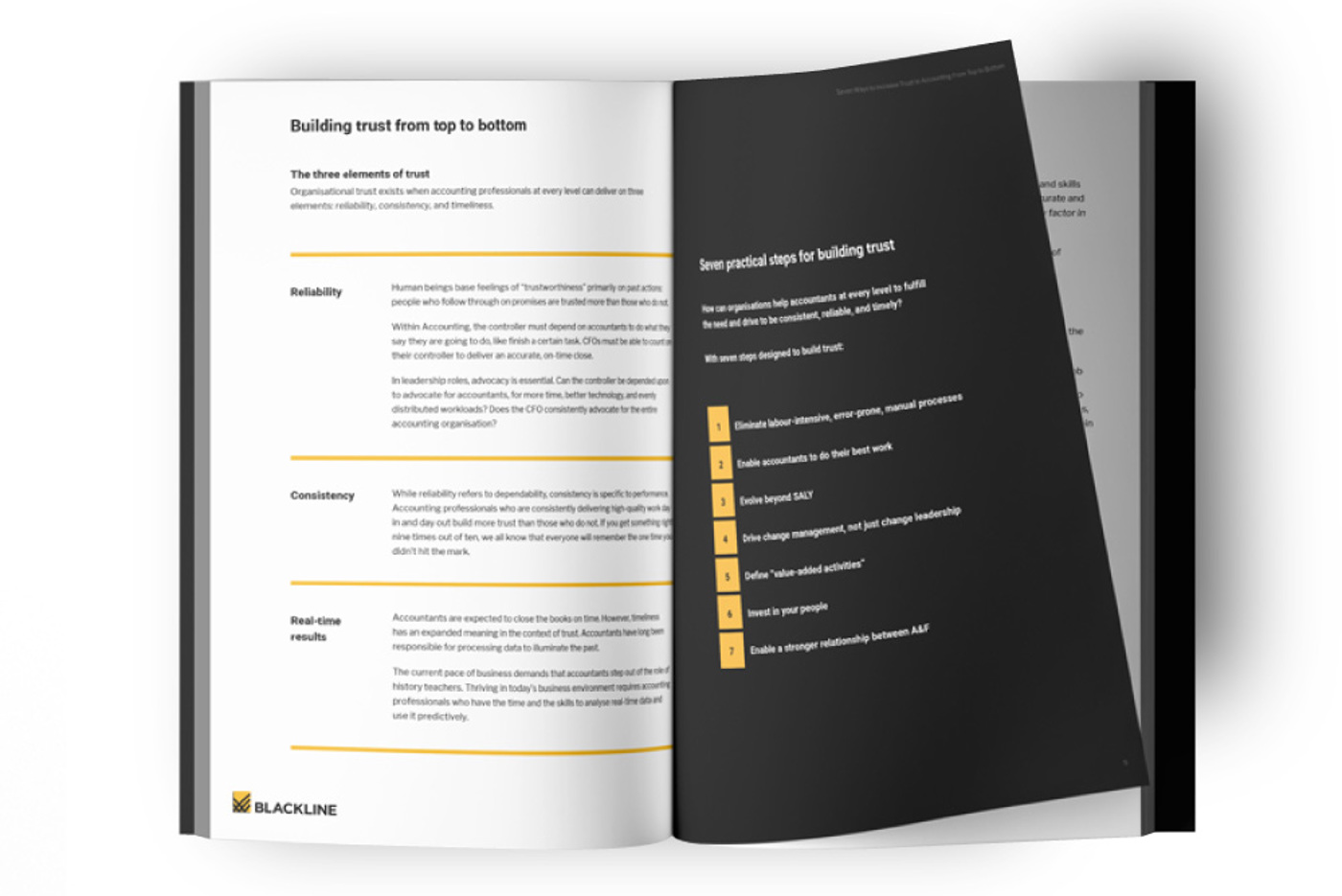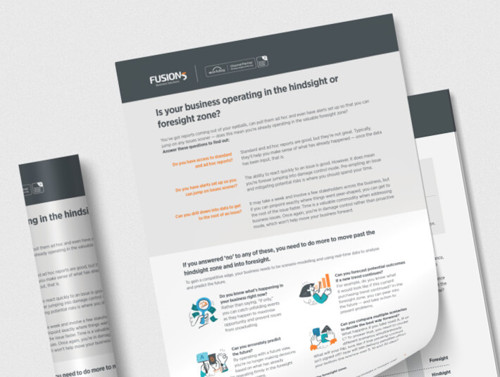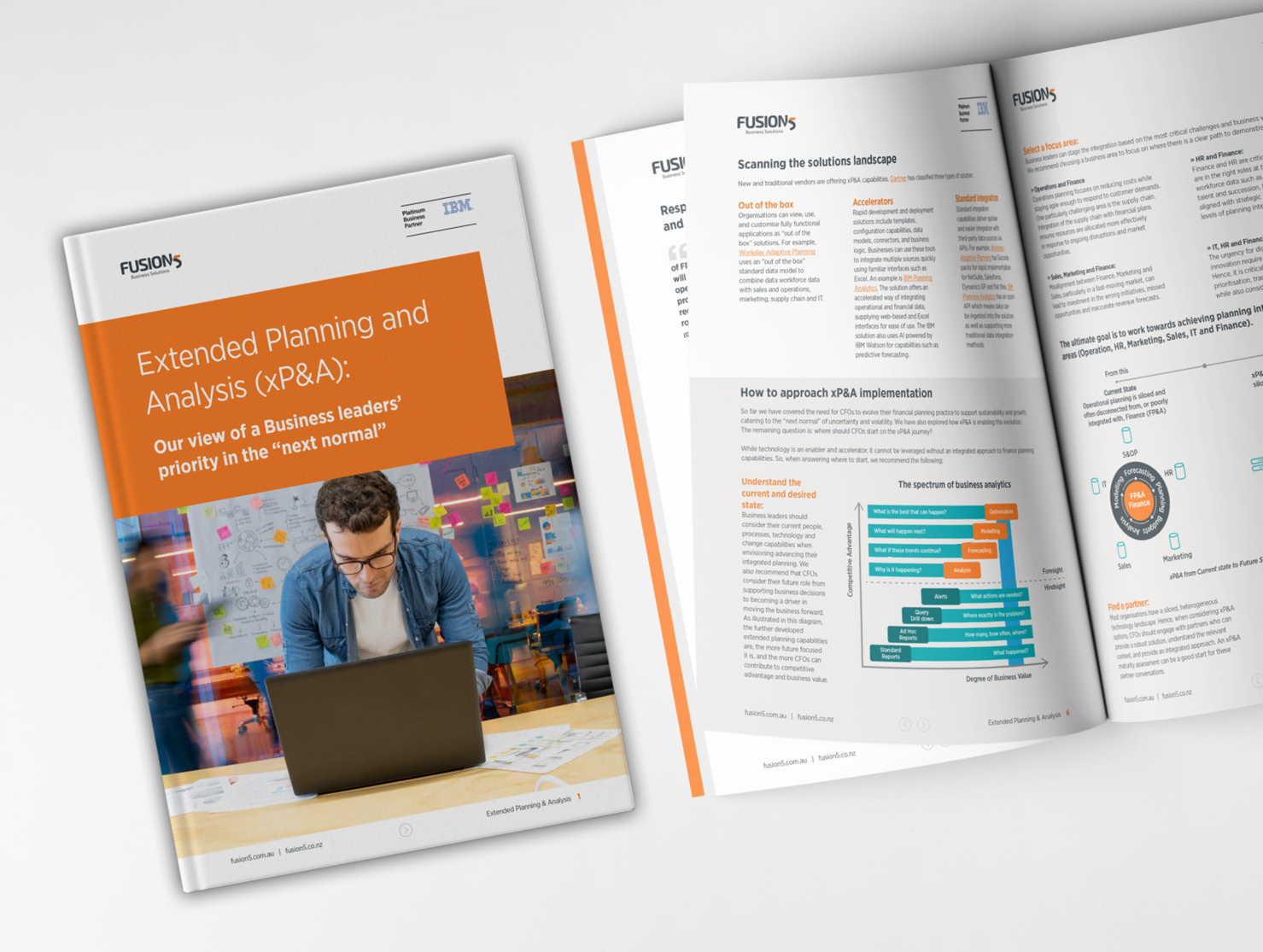The concept of xP&A isn’t new.
You’ve probably heard of it under the guise of organisation-wide planning, or integrated planning, noting that there is a strong case for interconnected planning, not just planning on a financial account level. This ensures planning takes into account the requirements for Sales, Operations, HR, and provides one, holistic business plan.
The term Extended Planning and Analytics (xP&A) was first coined by Gartner, who describe it as “the evolution of planning, combining financial and operational planning on a single composable platform.”
xP&A, says Gartner, “extends traditional Financial Planning and Analysis (FP&A) solutions focused solely on finance into other enterprise planning domains such as workforce, sales, operations and marketing.”
Over recent years, there’s been a marked increase in business uncertainty. So, it’s only to be expected that there’s been an ever-increasing demand by decision makers for access to more relevant, up-to-date, and high-quality information to underpin corporate planning and forecasting.
When on unsteady ground, certainty of data is king.
As more organisations ready themselves to replace their traditional planning process with more agile planning and forecasting practices, they are also preparing for more profound changes. These include adopting other planning methodologies like rolling forecasting, driver-based planning, and two-year and three-year plans as opposed to just the next 12 months.
To enable these changes, organisations are looking for software that can help them embrace best practice and achieve their planning goals with greater ease and higher accuracy.
And Gartner’s “Innovation Insight for xP&A” report agrees with us: “Although best-of-breed (BoB) operational planning solutions, such as workforce and sales and operations planning (S&OP) will remain popular, FP&A will begin to incorporate more of these functional capabilities as it evolves into xP&A (a platform-centric approach capable of supporting and integrating both financial and operational planning).”
So, why are some organisations hesitant to change?

Not everybody is convinced that xP&A is the way to go.
And some will elect to keep on using the lowest common denominator planning tool, MS Excel spreadsheets, with all the associated, well-documented risks.
There are a range of reasons why organisations may resist investing in software that will enable them to embrace xP&A throughout the organisation. These reasons include:
- We don’t consider planning applications as core functionality. And they are right. While dedicated planning tools offer real benefits, organisations can survive without it.
- We can’t see tangible benefits. Again, a valid point. The tangible deliverables are not as clear as a payroll solution, for example, which can be quantified in terms of reducing errors, rework, and assist with the compliance process. However, the key to creating a compelling business case lies in understanding the specific outcomes that are desired for each individual business, or the unique barriers that currently stop them from achieving their goals.
The reality is that organisations, their supply chain, customers and environment keep changing, and the same numbers and assumptions that worked six months ago don’t necessary apply to today. And obviously, substandard data and information leads to substandard planning accuracy and results. - The challenge of gathering the relevant data. For example: the media may report that there’s an increase in lead time for goods sourced internationally, and salaries and staff resignations are on the rise - but how that relates to your organisation may be harder to determine.
So, in the face of these objections, why should you still invest your time understanding what xP&A can do for your business?
1. The inescapable impact of interlinked divisions and departments

Although the different divisions or disciplines in an organisation may operate relatively autonomously, they are all part of the bigger organisation, and interlinked, whether they realise it or not.
For example, Marketing is there to drive Sales. Sales planning takes Marketing’s input into consideration when forecasting what can be achieved. And the sales budget for each unit informs Procurement and Operations. But if there are constraints, Procurement and Operations need to advise Sales to scale up or down, which in turn has a knock-on effect on Marketing activities.
And all of the above impact Finance, and possibly the personnel and IT required to underpin the delivery. If your HR team can’t provide sufficient staffing levels, it impacts Operations, which will affect Sales, and so on.
This illustration provides a potential interlinking, and their influence, of the divisions of an organisation:
2. Overwhelmingly positive results from xP&A
When faced with the alternative of doing nothing, market feedback indicates that xP&A is worth the effort.
In the BARC 2022 Planning Survey, one of the most powerful revelations is that the benefits of xP&A are remarkably consistent across organisations. Of 902 respondents, 95% or more said they’d achieved the following as a result:
- Increased transparency of planning
- Better quality of planning results
- Improved integration of planning with reporting/analysis
- More precise/detailed planning
Improved employee satisfaction - Improved integration of financial with operational planning
- Increased planning frequency
- Improved integration of strategic and operational planning
- Increased competitive advantage
- Reduced resource requirements for planning
- Reduced planning complexity
Moreover, 90% said they’d reduced costs and 87% said they had saved on headcount.
3. Software capability to deliver the top three requirements for xP&A users
One of the more interesting findings of the BARC survey was what organisations look for in their planning software. The top three requirements identified by more than 43% of global respondents are:
- Flexibility
- Good coverage of planning-specific requirements
- Good coverage of reporting/analysis requirements
If we look at the Asia-Pacific requirements here, “Good coverage of reporting/analysis requirements was a primary requirement” for 80% of the respondents, followed by “Good coverage of planning-specific requirements” and “Large data handling capacity”; all areas where the likes of IBM Planning Analytics and Workday Adaptive Planning are performing well.
These priorities help us to understand that businesses who invest in planning software prioritise the importance of integrating planning with reporting, analysis, and dashboards. They’re not just buying to gain efficiencies, but also with the expectation that they will gain a strategic advantage.
It’s also worth noting that dedicated planning software outstripped MS Excel by far in the three categories mentioned earlier (being flexibility, good coverage of planning-specific requirements and of reporting/analysis requirements).
So, it seems fair to deduce that failing to understand the strategic value of integration may be holding some organisations back from investing in planning software.
4. The role of MS Excel as an alternative

It seems that most organisations who are using MS Excel do so because:
- It’s available and familiar
- It’s cheaper than buying new software. Many organisations already have MS Excel installed, so why spend extra on other software? (One answer is that MS Excel frequently leads to higher total costs in the end, but that’s a topic for another article.)
- They’re unaware that there are cost-effective alternatives
- They’re blindly ignoring (or oblivious to) the risks involved in using MS Excel
An interesting deduction that can be made from the BARC survey is that organisations that implement planning software are highly unlikely to be dissatisfied with their chosen product, whereas of those sticking with Excel, 20% or more are either somewhat or deeply dissatisfied.
It’s also worth keeping in mind that “just because you can, doesn’t mean you should”.
As Nel Botha, Consulting Manager for Fusion5’s Planning Analytics division says so well, “To illustrate this point, back in the 1990’s I typed my thesis for my Masters’ degree in Lotus 123, simply because I was familiar with the software
Did I manage to complete the job using that software? Yes (and I still have the floppy disk to prove it). Was it the right tool for the job? No. It wasn’t.
Will I ever do that again? No, never".
What should you look for when buying?
So, what should you look for if you are considering planning software?
- Flexibility, good coverage of your specific requirements, as well as good coverage of reporting/ analysis requirements. These are all high on the list and should be considered of equal importance.
- The performance of the software. Does it do what the vendor or partner claims? Does it deliver what you expect? The best way to assess this – since you can’t do it without actually using it – is to find out what organisations with similar requirements have to say. Any worthwhile provider should be able to provide testimonials and case studies to this effect, or references you can talk to.
- Being able to cater to other factors that are specific to your requirements – for example – the ability to have a large number of concurrent users, or the ability to deal with very large data sets.
We recommend that once you’ve done your research and agreed on your software shortlist, do your due diligence on the provider(s).
Implementation is the next, and critical, step – and the success of this stage has as much to do with who partners with you, as it does with the software you choose.
Keep in mind, there are two significant components to a successful implementation and adoption: technology and methodology. The best software in the world does not guarantee a successful outcome. An implementation partner with the right methodology for your organisation may get closer to a perfect outcome with adequate software than a “connect the dots” implementation partner with an industry leading solution.
In summary, the risks involved in adopting xP&A have declined significantly.
The majority of implementations proceed smoothly, and most buyers end up satisfied with their choice.
If you’re still using MS Excel for your planning, checking that it’s still the right – and best – tool is the first thing you should do. It’s likely that your original justification for using it is past its use-by date. So, the time is right to “up your game” in planning and start reviewing the right planning software for you.

